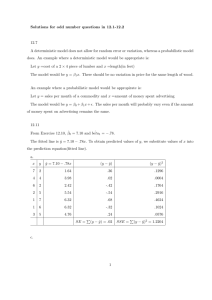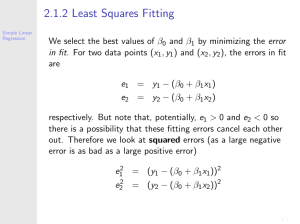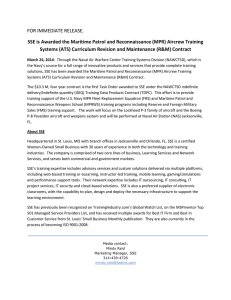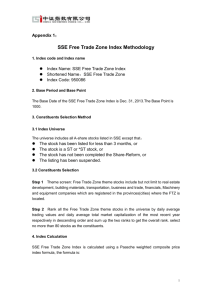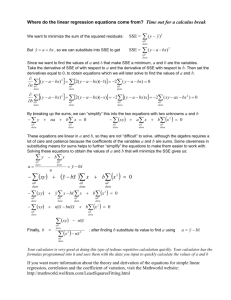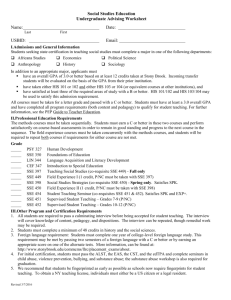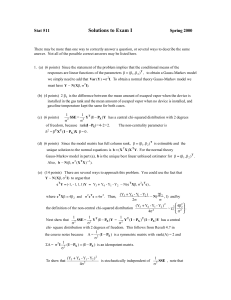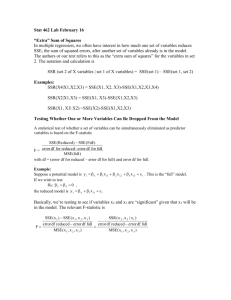Topic 2 - Pegasus @ UCF
advertisement
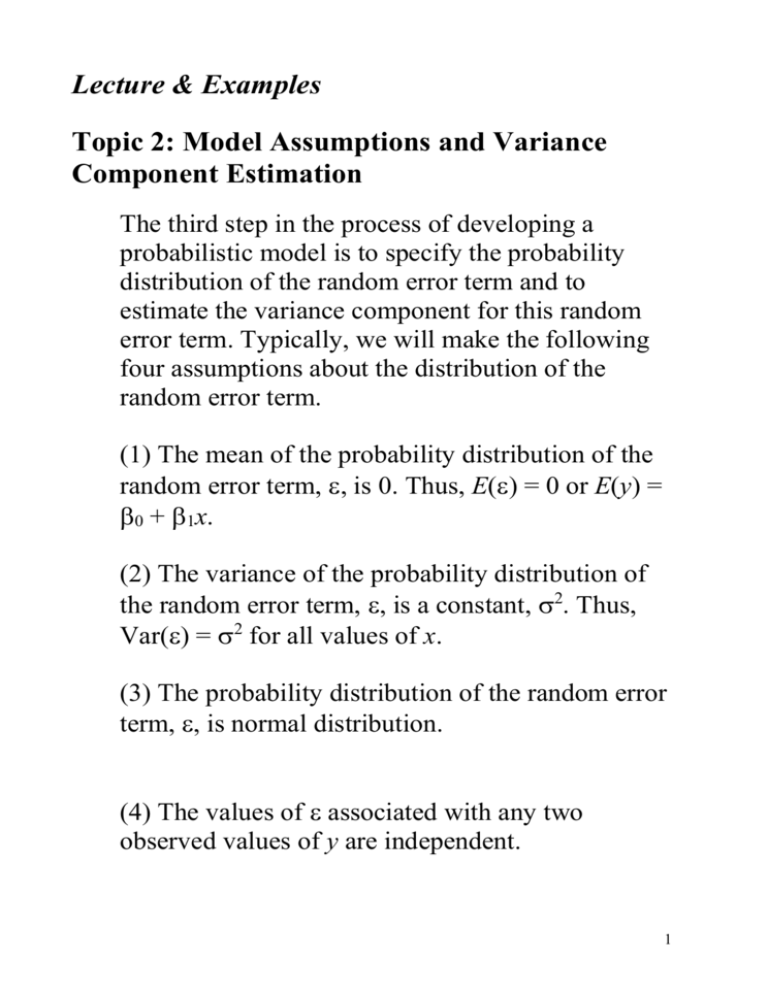
Lecture & Examples Topic 2: Model Assumptions and Variance Component Estimation The third step in the process of developing a probabilistic model is to specify the probability distribution of the random error term and to estimate the variance component for this random error term. Typically, we will make the following four assumptions about the distribution of the random error term. (1) The mean of the probability distribution of the random error term, , is 0. Thus, E() = 0 or E(y) = 0 + 1x. (2) The variance of the probability distribution of the random error term, , is a constant, 2. Thus, Var() = 2 for all values of x. (3) The probability distribution of the random error term, , is normal distribution. (4) The values of associated with any two observed values of y are independent. 1 With these four assumptions, the least-squares estimates of the parameters discussed in Topic 1 are the best estimates we can get. Although these assumptions are very difficult to prove, these assumptions are reasonable in many practical problems. Now, we need to discuss how to find a leastsquares estimator for 2. It is not difficult to show that the least-squares estimator for 2 is s2 = SSE (n - 2), where yi d , 2 b g SSE yi yi SS yy 1SS xy , SS yy yi2 2 n and n is the number of observations in the data. Consequently, the estimate standard deviation for is s s2 . We will provide either SAS printout or SSE and SSyy in the exam and practice problems for the whole semester. 2 Example 11.3: Calculate SSE and s2 for each of the following cases: (a) n 20, SS yy 95, SSxy 50, and 1 0.75 Solution: SSE SS yy 1SS xy 95 (0.75)(50) 57.5 s2 SSE 57.5 319 . ( n 2) 18 y 2 860, y 50, (b) n 40, SS xy 2,700, and 1 0.2 Solution: SS yy y 2 d i y n 2 (50) 2 860 797.5 40 SSE SS yy 1SS xy 797.5 (0.2)(2,700) 257.5 s2 SSE 257.5 6.776 ( n 2) 38 (c) n 10, SS yy 58, SS xy 91, SS xx 170 Solution: SS 91 1 xy 0.535 SS xx 170 SSE SS yy 1SS xy 58 (0.535)(91) 9.288 s2 SSE 9.288 1161 . ( n 2) 8 3 Example 11.4: In a random sample of n = 9 steers, the live weights and dressed weights were recorded. In the following table, we let y denote the dressed weight (in hundreds of pounds) and x denote the corresponding live weight (in hundreds of pounds). Live Weight (x) 4.2 3.8 4.8 3.4 4.5 4.6 4.3 3.7 3.9 Dressed Weight (y) 2.8 2.5 3.1 2.1 2.9 2.8 2.6 2.4 2.5 (a) What assumptions do we need to make about the distribution of the random error term in our probabilistic model y = 0 + 1x + ? Solution: (1) E() = 0 (2) Var() = 2 (3) The distribution of is a normal distribution (4) The values of associated with any two 4 observed values of y are independent (b) We know that SSyy = 0.72, SSxy = 1.06, and SSxx = 1.72. Compute SSE and s2. Solution: SS 106 . 1 xy 0.616 SS xx 172 . SSE SS yy 1SS xy 0.72 (0.616)(106 . ) 0.06674 s2 SSE 0.06674 0.00953 ( n 2) 7 5
